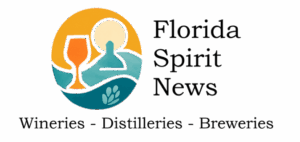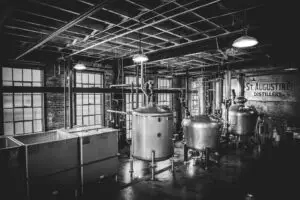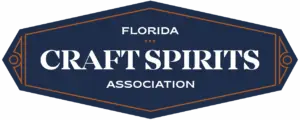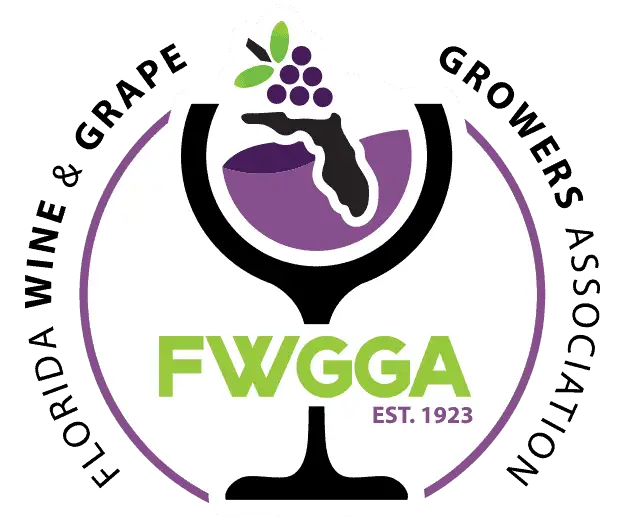Introduction
When most people think of American whiskey, their minds immediately drift to the rolling hills of Kentucky or the misty mountains of Tennessee. However, nestled among palm trees and ocean breezes, Florida has been quietly building its own reputation in the world of craft spirits. The Sunshine State’s journey into whiskey and bourbon production represents a fascinating blend of innovation, perseverance, and a distinctly Floridian approach to an age-old craft.
This article explores the history of whiskey and bourbon production in Florida, with special emphasis on the remarkable growth and development over the past three decades. From moonshine operations during Prohibition to today’s award-winning craft distilleries, Florida’s spirits scene tells a story of transformation and reinvention that mirrors the state itself.
Early Days: Florida’s Spirited Past
Florida’s relationship with distilled spirits dates back centuries, though not necessarily in the form of traditional whiskey production. During the colonial era, rum was the dominant spirit along Florida’s coastline, a natural result of the region’s trade connections with the Caribbean and abundant sugarcane.
While Kentucky and Tennessee were establishing their whiskey traditions in the late 1700s and early 1800s, Florida’s spirits production remained largely focused on rum and fruit brandies made from local citrus. The state’s hot, humid climate was initially considered unsuitable for aging whiskey, which typically benefits from seasonal temperature fluctuations.
During Prohibition (1920-1933), Florida became notorious for rum-running and moonshining operations. The state’s extensive coastline and proximity to Caribbean suppliers made it an ideal entry point for illegal spirits. Moonshine production flourished in the remote areas of North Florida and the Everglades, where law enforcement had difficulty tracking down illicit stills. This era established a rebellious spirit of distillation that would later influence Florida’s craft distillery movement.
Following Prohibition’s repeal, Florida’s spirits industry remained relatively quiet for decades. The state’s economy focused primarily on tourism, agriculture, and later, aerospace. Large-scale whiskey production remained concentrated in Kentucky, Tennessee, and other traditional whiskey states.
The Modern Renaissance: Florida’s Craft Distillery Movement
The true story of Florida whiskey and bourbon begins in earnest in the early 2010s, coinciding with the nationwide craft distillery boom. This movement represented a significant shift in American spirits production, moving from large industrial operations to smaller, artisanal approaches focused on quality, local ingredients, and innovative techniques.
The turning point came in 2012 when co-founders Mike Diaz and Philip McDaniel purchased a dormant ice plant in St. Augustine with plans to create what would become Florida’s first bourbon. This historic building, constructed in 1907 and formerly owned by Florida Power & Light Co., had provided refrigeration and cooling to St. Augustine residents for nearly 50 years before being sold to an employee for $1 in the 1950s as electricity-powered cooling became more widely available.
The St. Augustine Distillery’s establishment marked the beginning of a new era for Florida spirits. However, the founders faced significant regulatory hurdles. At the time, Florida law severely restricted craft distilleries’ ability to sell directly to consumers. McDaniel took a leadership role in the Florida Craft Distillers Guild, successfully lobbying the State Legislature to allow direct sales to consumers in tasting rooms, though initially limited to just 2 bottles per person per year.
This legislative victory, while modest, opened the door for Florida’s craft distillery industry to grow. In 2013, St. Augustine Distillery began distilling operations and laid down the first barrels of what would become their Florida Double Cask Bourbon, though it would not be sold for several years. On March 19, 2014, the distillery officially opened to the public, selling its first bottle of Florida Cane Vodka.
Florida Bourbon: Defying Convention
The notion of producing bourbon in Florida initially raised eyebrows among traditionalists. Bourbon, America’s native spirit, has strict legal requirements: it must be made in the United States from a grain mixture that is at least 51% corn, aged in new, charred oak containers, and bottled at no less than 80 proof. While there’s no legal requirement that bourbon be made in Kentucky (despite common misconceptions), the Bluegrass State’s climate has long been considered ideal for aging the spirit.
Florida distillers faced the challenge of aging bourbon in a climate very different from Kentucky’s. The state’s consistently hot temperatures and humidity accelerate the aging process, causing more rapid interaction between the spirit and the wood. What might take 6-8 years in Kentucky could achieve similar maturation characteristics in just 3-4 years in Florida.
Rather than viewing this as a disadvantage, Florida distillers embraced these unique conditions. On September 9, 2016, nearly two and a half years after laying down the first barrels, St. Augustine Distillery began selling its bourbon. Known as “Florida Double Cask,” it became the first bourbon to be fermented, distilled, aged, and bottled in the state of Florida.
The distillery marketed their product specifically as “Florida bourbon,” emphasizing the unique characteristics imparted by the state’s heat, humidity, and salt air, along with flavors derived from local water and high-quality grains. By December 2018, they had replaced the Double Cask with Florida Straight Bourbon as their signature offering.
Legislative Progress and Industry Growth
The growth of Florida’s whiskey and bourbon industry has been closely tied to legislative changes. Philip McDaniel and other craft distillers continued to advocate for regulatory reforms that would allow the industry to flourish. Their efforts led to several important victories:
- In 2015, the limit on direct-to-consumer sales increased from 2 bottles per person per year to 2 bottles per person per brand per year
- In 2017, this limit further increased to 6 bottles per person per brand per year
- In 2017, the federal excise tax (FET) on craft spirits was temporarily lowered
- In 2019, the federal excise tax reduction became permanent
- In 2021, all bottle sale limits were removed entirely
- In 2021, craft distilleries gained permission to sell drinks by the glass in tasting rooms
- In 2021, distillers were allowed to sell bottles at festivals and events
- In 2021, craft distillers gained the right to legally conduct consumer tastings at retail stores
These regulatory changes created a more favorable environment for craft distilleries to operate and expand. As a result, the number of distilleries in Florida has grown significantly over the past decade.
Florida’s Whiskey Landscape Today
Today, Florida boasts a diverse and growing whiskey and bourbon scene. The Florida Distillery Trail, launched by the Florida Craft Spirits Association, now features 39 stops across the Sunshine State, giving visitors the opportunity to experience the rich landscapes, landmarks, and vibrant blends of culture that embody Florida’s spirits industry.
Among the notable whiskey producers in the state:
St. Augustine Distillery remains a pioneer and leader in Florida bourbon production. Their portfolio has expanded to include Port Finished Bourbon and The Saint Bourbon, alongside their flagship Florida Straight Bourbon. In 2018, they were voted the #1 Whiskey Tour in North America out of nearly 2000 US craft distilleries.
James Two Brothers Distillers in Ocala takes a hands-on approach to making smoother, more delicate bourbons compared to their mass-produced counterparts. This family-owned-and-operated business hails from a long line of distillers, dating back to Civil War-era Kentucky, bringing traditional knowledge to Florida’s whiskey scene.
Marlin & Barrel Distillery in Fernandina Beach produces a cask-strength Shoreline straight bourbon, aged for at least three years. As a small company with a curated craft, they often release limited single-barrel expressions that quickly sell out.
30A Distilling Co. in Santa Rosa Beach, one of the state’s newest craft distilleries (opened in 2022), has a small but emerging whiskey program. Their limited output of properly aged bourbons sometimes amounts to just a few dozen bottles, creating highly sought-after releases.
Florida’s Unique Approach to Whiskey
What distinguishes Florida whiskey and bourbon from their counterparts in other states? Several factors contribute to their distinctive character:
Climate Influence: Florida’s heat and humidity accelerate the aging process and create unique flavor profiles. The interaction between spirit and wood happens more rapidly, extracting different compounds than in cooler climates.
Coastal Effects: Many Florida distilleries, particularly those near the coast, report that salt air influences their aging spirits, adding subtle briny notes to their whiskeys.
Local Ingredients: Florida distillers often incorporate local grains and water sources, imparting regional terroir to their products.
Innovation: As newcomers to the whiskey scene, Florida distillers feel less constrained by tradition and more free to experiment with different techniques, barrel finishes, and flavor profiles.
Ric deMontmollin, the vice president of production at St. Augustine Distillery, embodies this spirit of innovation and patience. When asked which of his bourbons is his favorite, he replied, “It’s the one that’s just gone in the barrel and won’t be released for at least five years.”
Community Impact and Cultural Significance
Beyond producing spirits, Florida’s whiskey distilleries have become important cultural and economic contributors to their communities. Many are housed in historic buildings, preserving architectural heritage while creating new uses for old spaces. The St. Augustine Distillery’s renovation of the historic Ice Plant earned numerous accolades for historic preservation and adaptive reuse.
These distilleries have also become tourist destinations, attracting visitors interested in learning about the production process and tasting locally-made spirits. Many offer tours, tastings, and educational experiences that contribute to Florida’s tourism economy.
Additionally, distilleries often collaborate with other local businesses. St. Augustine Distillery, for example, has partnered with local companies to create exclusive retail items including Bourbon Barrel Rested Coffee with The Kookaburra, spirit-flavored ice pops with The Hyppo, Bourbon Barbeque Sauce with Endorphin Farms, and Bourbon Balls with Creme de la Cocoa. These collaborations strengthen local economic ties and create unique products that showcase regional flavors.
Looking to the Future
Florida’s whiskey and bourbon industry continues to evolve and grow. As barrels laid down in recent years reach maturity, consumers can expect to see more complex and nuanced offerings from the state’s distilleries. The industry’s focus on innovation suggests that Florida whiskey makers will continue to push boundaries and develop distinctive expressions that reflect the state’s unique character.
Climate change presents both challenges and opportunities for Florida whiskey production. Rising temperatures may further accelerate aging, potentially creating new flavor profiles but also increasing evaporation (the “angel’s share”). Coastal distilleries may need to adapt to changing conditions, including the potential for more frequent and severe storms.
Despite these challenges, the outlook for Florida whiskey remains bright. The state’s craft distillers have demonstrated remarkable resilience and creativity in establishing a new whiskey tradition in an unexpected location. As their products gain recognition and acclaim, Florida is securing its place on the map of American whiskey regions.
Conclusion
The story of whiskey and bourbon production in Florida is one of innovation, adaptation, and perseverance. From virtually non-existent just fifteen years ago to a thriving industry with dozens of distilleries today, Florida’s whiskey scene represents one of the most dynamic developments in American spirits in recent decades.
What makes this evolution particularly remarkable is how Florida distillers have embraced their state’s unique conditions rather than trying to mimic traditional whiskey regions. By leveraging Florida’s climate, incorporating local ingredients, and approaching whiskey-making with a spirit of experimentation, they have created products with a distinctive Florida character.
As you sip a glass of Florida bourbon, you’re not just tasting a spirit – you’re experiencing the culmination of legislative battles, entrepreneurial vision, technical innovation, and a deep appreciation for craft. In every bottle is a story of Florida itself: bold, sunny, and unafraid to chart its own course.
References
- Flamingo Magazine. (2024, November 14). The Best Florida Bourbon and Where to Find it. https://flamingomag.com/2024/11/14/florida-bourbon/
- St. Augustine Distillery. (2022, March 18 ). St. Augustine Distillery Celebrates 8 Years: “The Spirit of Florida”. https://www.staugustinedistillery.com/blog/st-augustine-distillery-story
- Florida Craft Spirits Association. (2024, January 17 ). Florida Distillery Trail. https://floridacraftspirits.org/florida-distillery-trail/
- Distillery Trail. (n.d. ). Florida – The Sunshine State. https://www.distillerytrail.com/directory-distillery/locations/florida/
- Destination Distillery. (n.d. ). Florida Distillery Trail. https://destinationdistillery.com/trail/florida-distillery-trail/
- Florida Media Now. (2025, February 22 ). Moonshine and Rum-Running in Florida: A Legacy of Rebellion and Profit. https://floridamedianow.com/2025/02/moonshine-and-rum-running-in-florida-a-legacy-of-rebellion-and-profit/
- Whiskey Network. (2025, February 6 ). St. Augustine Distillery – The Spirit of Florida. https://whiskeynetwork.net/2025/02/st-augustine-distillery-the-spirit-of-florida/



